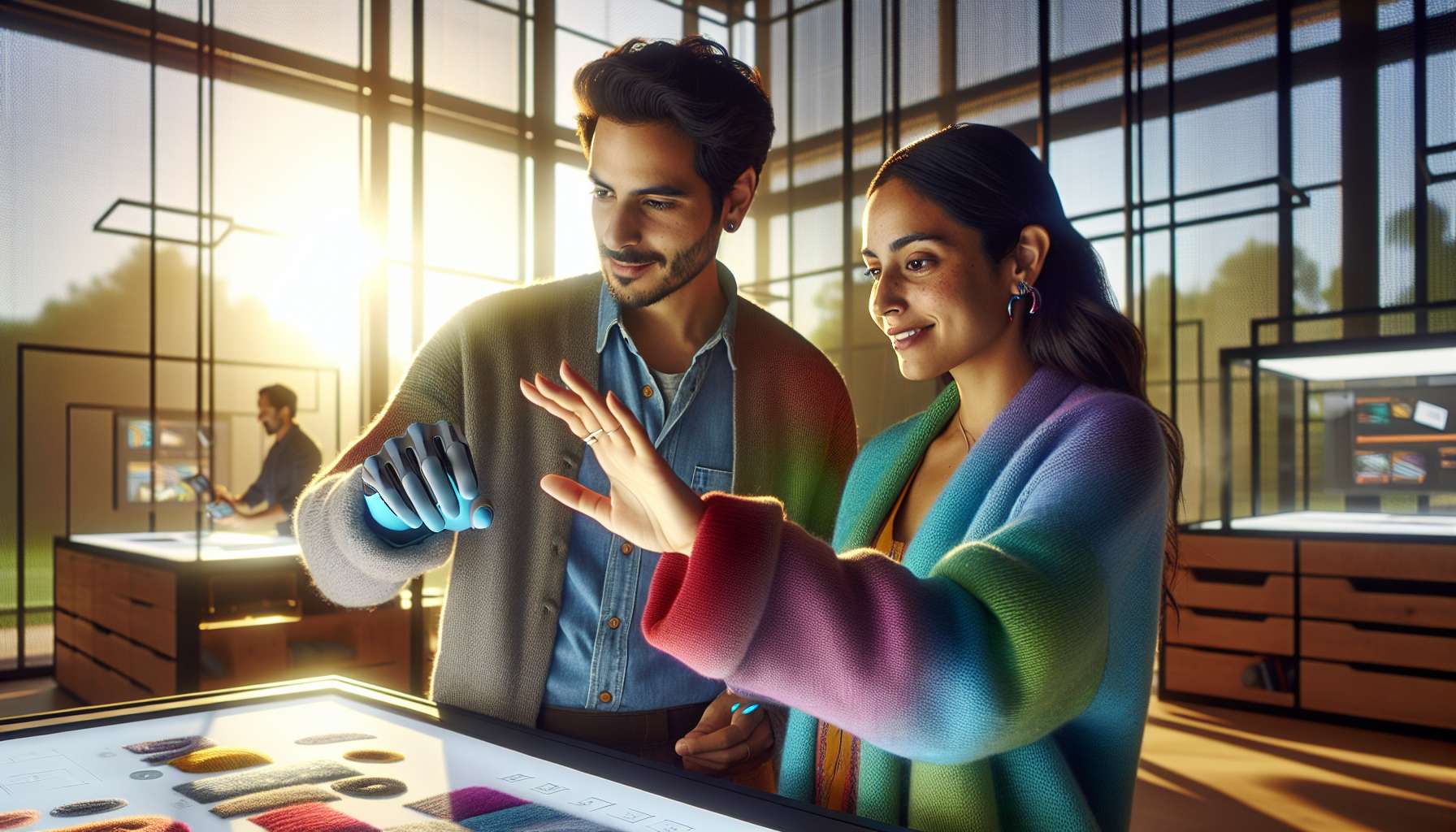Transforming Retail Experiences with Augmented Reality
Imagine walking into a retail store where the products come to life, where you can interact with virtual objects, and where the shopping experience is elevated to a whole new level. This is the power of augmented reality (AR) in creating interactive retail environments. In this article, we will explore how AR is revolutionizing the retail industry and how businesses can leverage this technology to enhance customer engagement and drive sales.
What is Augmented Reality?
Before we dive into the world of interactive retail spaces, let’s briefly understand what augmented reality is. AR is a technology that overlays digital information, such as images, videos, and 3D models, onto the real world. By using a smartphone, tablet, or AR glasses, users can see virtual objects integrated seamlessly into their physical surroundings.
The Power of Interactive Retail Spaces
Interactive retail spaces powered by AR offer a multitude of benefits for both retailers and customers. Let’s explore some of the key advantages:
- Enhanced Product Visualization: AR allows customers to visualize products in their own environment before making a purchase. For example, imagine trying out furniture in your living room or virtually trying on clothes without stepping into a fitting room. This immersive experience helps customers make informed decisions and reduces the chances of returns.
- Personalized Shopping Experiences: AR enables retailers to provide personalized recommendations and offers based on individual preferences and purchase history. By analyzing customer data, AR-powered retail spaces can suggest complementary products, showcase personalized promotions, and create tailored experiences that resonate with each customer.
- Virtual Try-Ons and Fittings: AR technology allows customers to virtually try on products like clothing, accessories, and cosmetics. By overlaying virtual elements onto the customer’s image, they can see how different products look on them without physically trying them on. This feature not only saves time but also enhances the overall shopping experience.
- Interactive Product Demonstrations: AR enables retailers to showcase their products in a more engaging and interactive way. Customers can interact with virtual objects, explore product features, and even see how they work in real-time. This hands-on experience creates a deeper connection with the product and increases customer satisfaction.
Real-World Examples
Several forward-thinking retailers have already embraced AR to create interactive retail spaces. Let’s take a look at some real-world examples:
- Lowe’s: The home improvement giant introduced the “View in Your Space” feature in their mobile app, allowing customers to visualize how appliances and furniture would look in their homes. This AR-powered tool helps customers make better purchasing decisions and has significantly increased customer satisfaction.
- Sephora: Sephora’s Virtual Artist app uses AR to enable customers to try on different makeup products virtually. By scanning their face, customers can experiment with various shades of lipstick, eyeshadow, and more. This interactive experience has not only boosted customer engagement but also increased sales.
- LEGO: LEGO’s AR Studio app brings their physical sets to life by overlaying virtual animations and effects onto the real-world models. This interactive experience enhances the play value of LEGO sets and sparks creativity in children and adults alike.
The Future of Interactive Retail Spaces
The potential of AR in retail is vast, and the technology is continuously evolving. As AR hardware becomes more accessible and affordable, we can expect to see even more innovative applications in the future. From virtual showrooms and personalized AR advertisements to gamified shopping experiences, the possibilities are endless.
According to a report by Grand View Research, the global AR in retail market is projected to reach $11.14 billion by 2025, indicating the growing interest and investment in this technology. As a business executive, it’s crucial to stay ahead of the curve and explore how AR can transform your retail environment.
Conclusion
Augmented reality is revolutionizing the retail industry by creating interactive and immersive shopping experiences. By leveraging AR technology, retailers can enhance product visualization, provide personalized recommendations, enable virtual try-ons, and offer interactive product demonstrations. Real-world examples from companies like Lowe’s, Sephora, and LEGO demonstrate the positive impact of AR on customer engagement and sales. As the future of retail unfolds, embracing AR in your business strategy can give you a competitive edge and elevate your customers’ shopping experiences to new heights.





